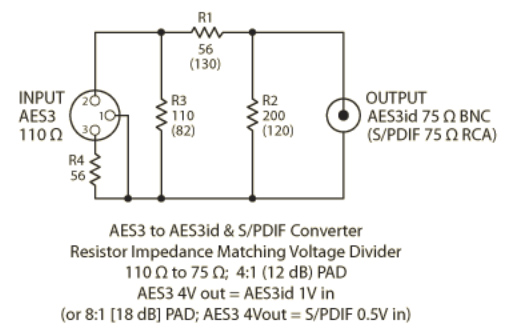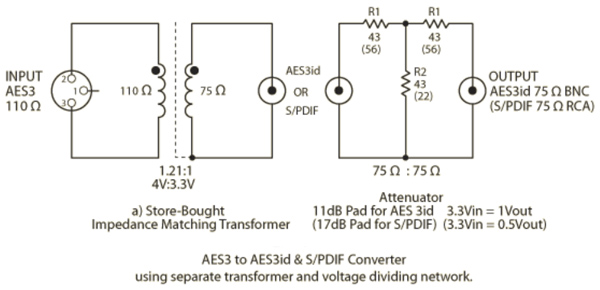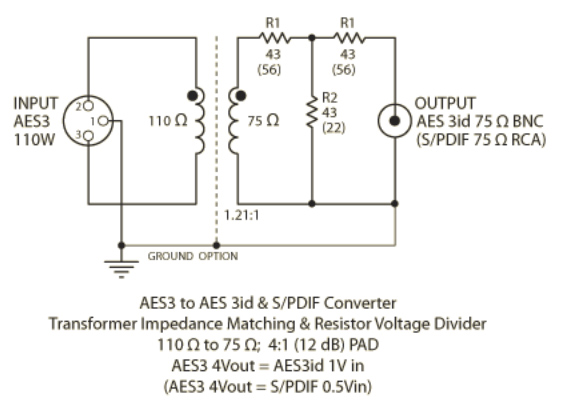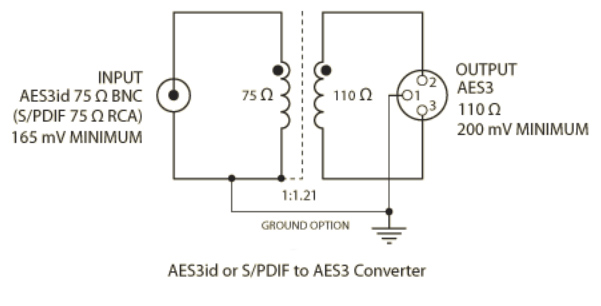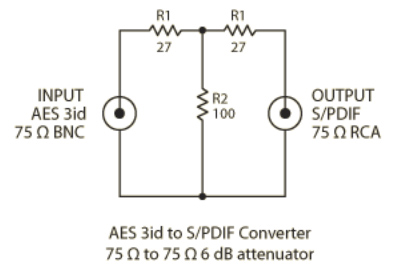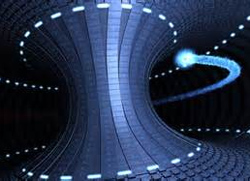
Conversion Caution
You can convert one electrical interface to another with just a few parts, but the protocol used in AES3 and S/PDIF is not exactly the same and that can cause problems. The basic data formats are identical, but there is a bit in the channel status frame that tells which is which, and assigns certain bits different meanings.
This sets the stage for incompatibilities. Many older units are sticklers about what’s what in each bit, and even though a given signal faithfully complies with the standard, some equipment will still reject it.
Fortunately, many units are flexible and tolerant so simple resistor or transformer converters work. But be warned that a converter that works fine with one unit is no guarantee that it will work fine with all units.
Remember that even though the audio data is the same between AES3 and S/PDIF, they have different subcode formats. AES3 converted to 75-ohm coax is not S/PDIF, and S/PDIF converted to XLR balanced is not AES3. Nor is AES3id 75-ohm BNC the same as 75-ohm RCA S/PDIF—it may work, but it is not the same.
They are still in their native format; just the transmission medium has changed. Going from S/PDIF to AES3 has a higher degree of success than the other way around. AES3 signals often are not recognized as valid by S/PDIF inputs. Whether they will work in your application depends on the equipment chosen.
Therefore the following passive circuits convert only the signal level and impedance, and not other protocol details (e.g., sample rate, consumer/professional status, nor correct any block errors in the data stream).
Examining the table reveals the difference in levels as the most troubling. The minor impedance mismatch is easily taken care of, but the levels and drive currents are another matter entirely for a passive converter. (If you add power supplies to the converter then it becomes straightforward, but that is the subject of another Note and another day.)
AES3 To AES3id Or S/PDIF
IF (BIG if) you know that either the transmitter or the receiver is transformer coupled and the interconnect distance is short then a simple resistor divider will match the impedances and change the level as shown in Figure 1.
This is the AES3id recommended network for creating a 12-dB pad (4:1 voltage divider) and converting the AES3 110 ohm balanced output impedance into 75 ohms for driving the AES3id input. Therefore an average output level of 4 volts will be reduced to 1 volt. Since this exceeds the max allowed for S/PDIF, use the values shown in parenthesis to create an 18-dB pad (8:1 voltage divider) producing 0.5 volt output for the same 4 volts input. (Other average AES3 output voltages require different resistors—consult AES3id for value graph).
Transformers make the best passive impedance matchers, plus provide the benefits of ground isolation, high-frequency rejection, DC blocking and short-circuit protection. Impedance matching is easily handled by selection of the appropriate turns ratio (1.21:1 for 110-ohm to 75-ohm—it’s the square of the turns ratio for impedance) and careful attention to winding details allow wideband high-frequency transformers (you need ~12.5 MHz). The best and safest converter includes the transformer.
If you are not sure about the transformer isolation of the equipment interfacing, use a store-bought impedance matching transformer that comes complete with connectors and a separate resistor voltage divider network as shown in Figure 2. This T-network is a 75-ohm:75-ohm bi-directional attenuator.
The attenuation is a little less than that of Figure 1 for the same (assumed) 4-volt AES3 input because the transformer reduces the voltage level by a factor of 1.21:1 (down to 3.3 volts) as well as matching the impedances.
Sources
Store-Bought: Neutrik NADITBNC Series
Or C4 Audio Systems SA XM BF Series
Alternatively, build the impedance matching transformer into the resistor network, as shown in Figure 3.
Component Sources
Scientific Conversion SC961-04 (SMT) (evaluation PCB available [good tech notes])
Or Schott P/N 22523 (thru-hole)
AES3id Or S/PDIF to AES3
This conversion only requires impedance matching since the levels are smaller than AES3, but compatible. No satisfactory resistor-only network exists to convert between AES3id or S/PDIF and AES3 even though one appears in the AES3id document.
While the network given matches the impedance, it does so with an attenuation of the input signal, running the risk of making it too small for the AES3 receiver, and it does not create the balanced 110-ohm lines that an AES3 receiver needs.
Therefore it is recommended to use a transformer for this conversion as shown in Figure 4. Note that this adapter is identical to that shown in Figure 3, only driven backwards.
Using the store-bought converter with a male-to-female adapter allows it to be fully bi-directional—or build your own using the recommended transformers. BUT DO NOT FORGET that the levels coming out of an AES3 transmitter are too large for the typical AES3id or S/PDIF input so you must add the attenuator.
Going the other way you do not need the attenuator since all AES3 receivers can handle the smallest in-spec AES3id or S/PDIF output signal as long as a minimum of 200 mV arrives.
AES3id To S/PDIF & Vice-Versa
Since both formats use 75-ohm coaxial cable, connecting an AES3id output to an S/PDIF input is simple. All that is needed is to provide compatible hardware hook-up and a 6-dB pad (2:1 attenuator). As long as connecting distances are short, the simple T-network shown in Figure 5 does the job.
S/PDIF outputs may be connected directly to AES3id inputs—no adapter is required (but don’t forget the formatting caveats mentioned above).
NOTE that even though the network is symmetrical and functions normally in either direction, it is to be used only to interface between an AES3id output and an S/PDIF input.
If this adapter is used the other way around, to connect an S/PDIF output to an AES3id input, the attenuation may make the S/PDIF signal too small for the AES3id receiver to acquire.
Dennis Bohn is a principal partner and vice president of research & development at Rane Corporation. He holds BSEE and MSEE degrees from the University of California at Berkeley. Prior to Rane, he worked as engineering manager for Phase Linear Corporation and as audio application engineer at National Semiconductor Corporation. Bohn is a Fellow of the AES, holds two U.S. patents, is listed in Who’s Who In America and authored the entry on “Equalizers” for the McGraw-Hill Encyclopedia of Science & Technology, 7th edition.

